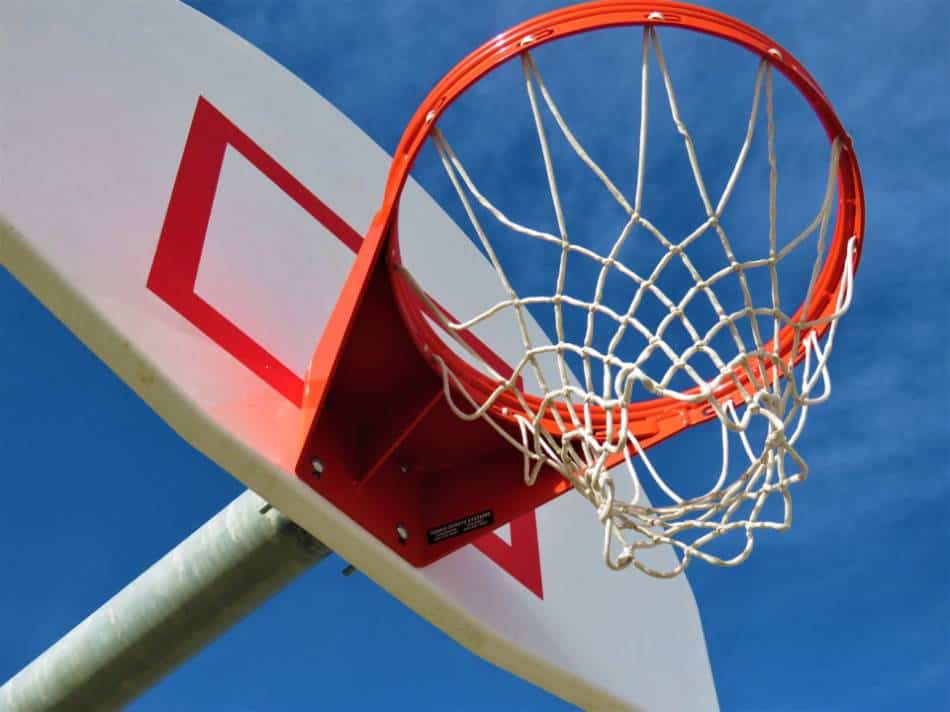
To keep the game of basketball organized and ensure players understand their responsibilities, each player is given a specified position when on the court. These positions are universal across all basketball leagues and organizations, including the NBA, WNBA, EuroLeague and more.
So, what are the positions in basketball?
There are five positions in the game of basketball and they include the point guard (PG), shooting guard (SG), small forward (SF), power forward (PF), and center (C). Some players exclusively play one position, while other players find success playing multiple positions.
Since every position is unique and requires different skills to be effective on the court, we’re going to discuss in detail the differences between each position.
We’ll also touch base on the sixth man, one of the most important roles in basketball. By the time we’re finished, you’ll know more about each position and which one fits you best.
The Point Guard Position in Basketball
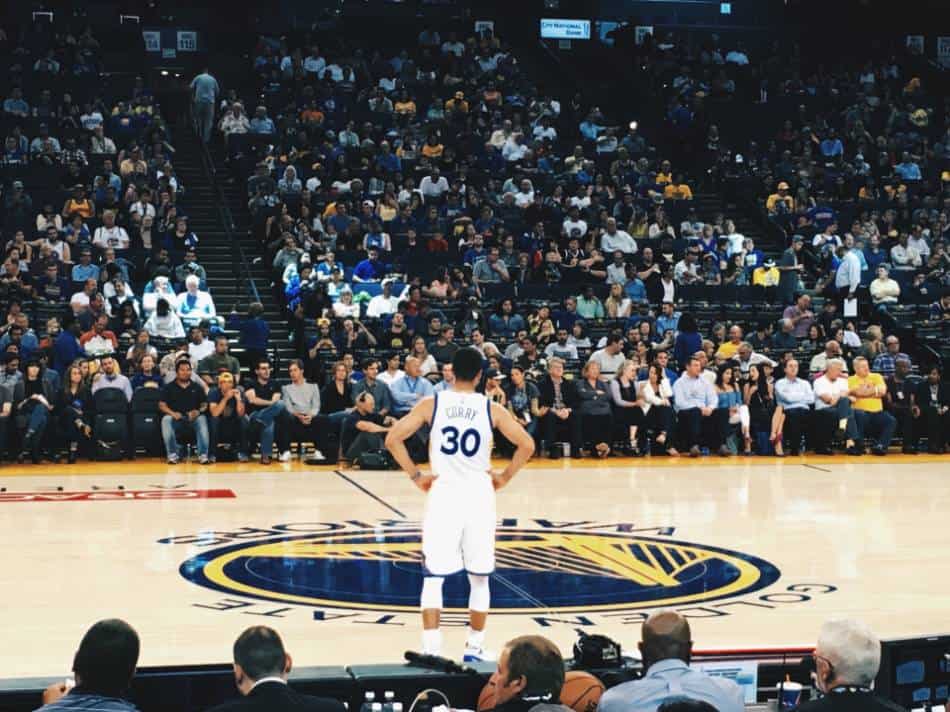
The first of the five positions on our list is the point guard, who is also referred to as the ‘point”, ‘one’ and ‘PG’. They are generally the play-caller/ball handler on the team and the one tasked with making sure everyone is in the right position before starting a play.
Because of this, they’re often called the ‘quarterback’ of the basketball team.
Although players continue to get bigger and stronger each year, the point guard is usually one of the smaller players on the team. There are a few exceptions, but the stereotypical point guard measures around 6’0’’ to 6’3’’ — some even measure below 6’0’’.
The point guard is usually the most popular position when growing up because they’re the most prominent ball handler on the court.
As you get older, however, the point guard position becomes much more technical and is reserved for a rare group of players.
What Skills Do You Need to Be a Point Guard?
Point guards need to have several skills if they want to succeed, no matter what team or basketball league they play in. They’re asked to do a lot when on the court and must know how to hold everyone accountable, including themselves.
Let’s take a look at the five most prominent skills needed to be a quality point guard in today’s climate:
- Communication – since the point guard is the main ball handler and brings the ball up the court, they need to communicate with their teammates to ensure the play is understood. That also means they’re the ones that initiate the play and make the first move.
- Intelligence – this skill is needed when calling plays and keeping everyone in check, but it’s also needed when they don’t have the ball in their hands. Point guards need to make the right decisions at all times.
- Passing – point guards are known for racking up assists and making their teammates look good. Whether you have the ball at the top of the key or are driving to the basket, solid passing skills are a must for any point guard.
- Triple-Threat – when you have the ball in your hands a lot, you’ll find yourself in the triple-threat position a lot. Mastering this position helps compliment your ability to pass the ball, shoot, and dribble — which leads us to the final skill.
- Dribbling – bringing the ball up the floor, you’re met with a lot of resistance from the defense. If you’re not a good ball handler, the defense will pick you apart and won’t respect you with the ball in your hands.
Mastering these skills is vital to the point guard position. While they might not always be a leader off the court (such as inside the locker room), they are almost always the vocal leader when on the court. You can think of them as the on-court coach.
Is Point Guard the Most Important Position?
It’s difficult to give any position the title as the ‘most important position’ in basketball, but the point guard comes mighty close. They are the ones that must maintain leadership and ensure the team is working together at all times.
Teamwork is essential if you want to win in basketball. That’s why many people view the point guard as the most important, they’re the glue that keeps the team together.
Even a roster with as many All-Stars as it has starters wouldn’t be the same without a quality point guard by their side.
It’s important to note that while the point guard is often the most important position, it doesn’t mean the point guard is always the best player on the team. Especially in today’s basketball, the point guard is rarely the best player on the team.
Still, every team needs that glue and the point guard is the one who provides it.
Who Is the Best Point Guard in the NBA?
There are a lot of good point guards in the NBA and they continue to become more versatile each year. As they grow taller and stronger, they’ll continue to become more elevated in the game — but that shouldn’t change their sole responsibility when on the court.
Today, three point guards stand above the rest when looking at the true makeup of a point guard — Stephen Curry, Damian Lillard, and Chris Paul. They lead, they pass, they dribble, they’re clutch and they don’t make mistakes often.
Let’s take a look at each player’s career stats:
- Stephen Curry – 11 seasons, 699 games, 23.5 points, 4.5 rebounds, 6.6 assists, 1.7 steals and 0.2 blocks per game.
- Damian Lillard – 8 seasons, 615 games, 24.2 points, 4.2 rebounds, 6.5 assists, 1.0 steals and 0.3 blocks per game.
- Chris Paul – 14 seasons, 1,020 games, 18.5 points, 4.5 rebounds, 9.5 assists, 2.2 steals and 0.1 blocks per game.
These three players have gained so much respect from their teammates and the league in general. Chris Paul, for example, is the President of the National Basketball Players Association (NBPA) and has held the position since 2013.
Stephen Curry has won two MVPs, three championships, and six All-Star selections. Lillard was Rookie of the Year and has five All-Star selections under his belt. Paul, meanwhile, was Rookie of the Year and has 10 All-Star selections.
These players are always improving their basketball game and looking for new ways to help their team win. If you want to see a true point guard in action, take a look at their highlight tapes.
The Shooting Guard Position in Basketball
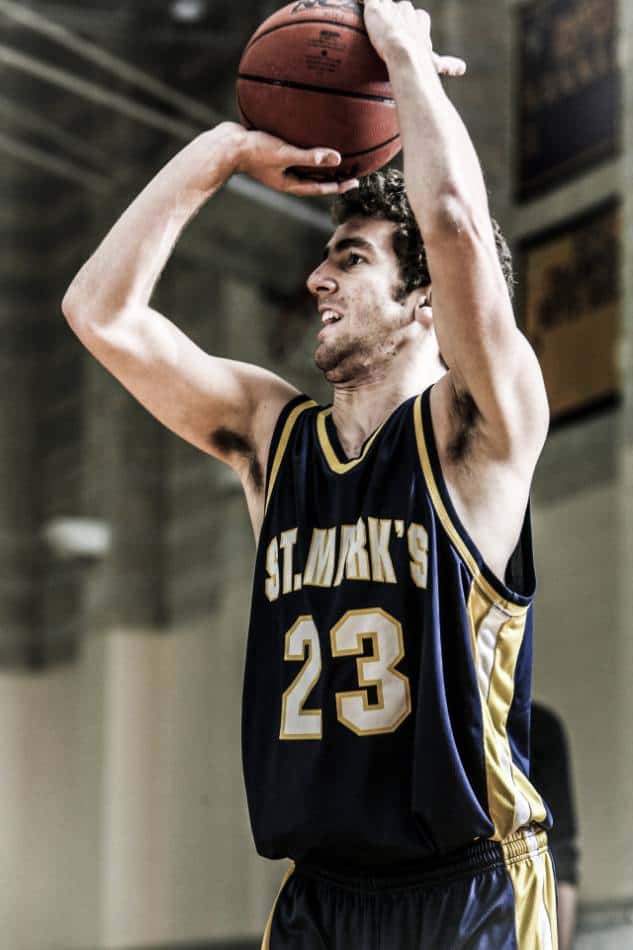
The second of the five positions is the shooting guard, also known as the ‘two’, ‘off guard’ or ‘wing’ (along with the small forward). They’re the other guard on the floor alongside the point guard and are generally shorter than most players — besides the point guard.
What the point guard does with the ball in their hands, the off guard does without the ball in their hands. They help facilitate movement on the floor and keep the defense on their toes with unpredictability. Although they don’t always get attention, they’re always busy on the court.
In general, a good shooting guard is asked to shoot the ball well and to play a high level of defense. If you’re not a high-energy type of player, then the shooting guard position isn’t suited for you.
What Skills Does a Shooting Guard Need?
Much like the point guard position, a good shooting guard needs to be talented in specific areas of the game. Not having the right skills to fulfill the position leaves your team at risk when on the floor.
Let’s take a look at the five most important skills needed when mastering the shooting guard position:
- Long-Range Shooting – the biggest responsibility for shooting guards is long-range shooting. They need to know how to shoot from beyond the three-point line and must do it at an efficient rate. It helps that they generally line up on the wing and remain behind the three-point line as the play develops.
- Movement – when efficiently scoring from downtown, getting yourself open is essential. With constant movement, the defense is left guessing, while the shooting guard waits for the pass.
- Perimeter Defense – you’ll often see shooting guards defending the best player on the opposing team, regardless of the opponent’s position. Shooting guards make up some of the most-sound defenders when it comes to technique on the perimeter. Coaches expect steals and tipped passes from these players.
- Shot Fake – since shooting guards are expected to shoot when they get the ball, a quality shot fake makes shooting guards a very versatile player on offense. After a shot fake, a world of opportunity opens up. Step to the side and shoot without pressure, drive to the basket, dish the ball to a teammate, the choice is yours.
- Dribbling – although shooting guards do most of their work off-the-ball, they are sometimes asked to relieve the point guard from their ball-handling duties. When this happens, it’s essential shooting guards feel just as comfortable with the ball in their hands as they feel without it.
There are a lot of notable shooting guards in the league that play multiple positions. Those that play both the point guard and shooting guard positions are called combo guards, while those that play small forward and shooting guard are called swingmen.
As shooting guards continue to become taller and stronger, they’ll start playing power forward as well. This is when teams start using ‘small ball,’ which is utilizes one or zero ‘big men’ on the floor (true power forwards or centers).
Who Is the Best Shooting Guard in the NBA?
Now that we’ve discussed some of the important traits behind shooting guards, let’s take a look at some of the most notable shooting guards in the NBA.
Overall, there are three that top my list without hesitation — James Harden, Devin Booker, and Bradley Beal. These three players are some of the most explosive scorers in the NBA, but they don’t stop there. They help their teams in a wide range of ways.
Here’s a brief look at their career stats thus far:
- James Harden – 11 seasons, 833 games, 25.2 points, 5.3 rebounds, 6.3 assists, 1.6 steals and 0.5 blocks per game.
- Devin Booker – 5 seasons, 342 games, 22.5 points, 3.6 rebounds, 4.7 assists, 0.8 steals and 0.3 blocks per game.
- Bradley Beal – 8 seasons, 545 games, 21.0 points, 4.0 rebounds, 4.0 assists, 1.1 steals and 0.4 blocks per game.
Each of these players didn’t have strong seasons entering the league but have become some of the most dangerous players when on the court — especially in the past few years.
None of them have any championship rings, but it’s only a matter of time before one of them gets one.
The Small Forward Position in Basketball
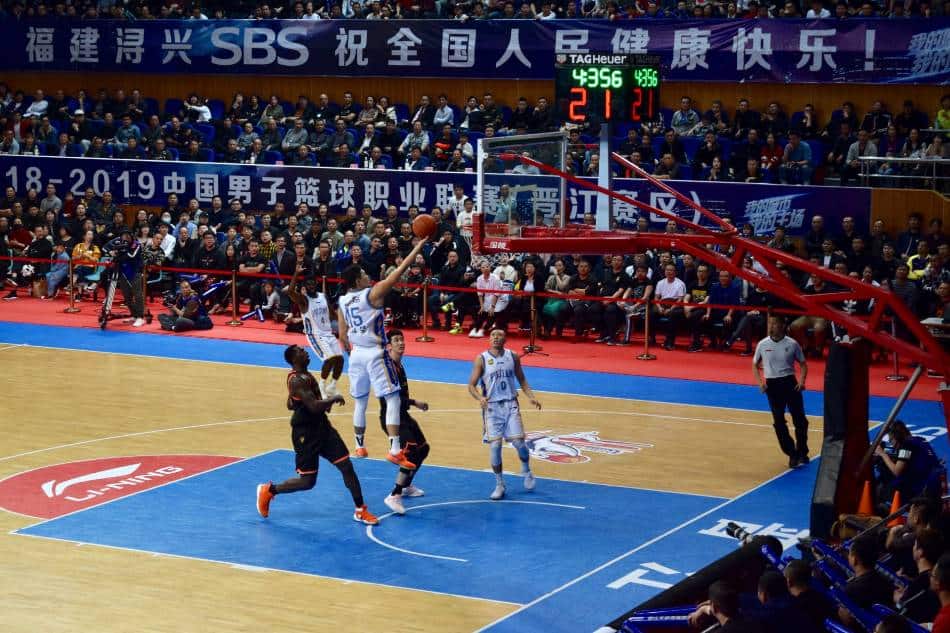
The third of the five positions is the small forward, also known as the ‘SF’ or the ‘three-man’, is generally the most talented and versatile player on the floor. Especially in today’s game, small forwards get the most attention due to their skill, size, and explosiveness.
Small forwards and point guards have a lot in common. They’re both seen as vocal leaders and are asked to do a lot on the court. In a way, small forwards are becoming the new point guard and are sometimes the ones bringing the ball up the court — not the point guard.
In addition to their similarities with point guards, small forwards also share similarities with shooting guards. They’re both known as wing players and do a majority of their work from the wing area. The small forward, however, is typically more versatile, stronger, and taller.
What Skills Does a Small Forward Need?
Now that we understand the basics behind what a small forward is and that they’re required to be a versatile player, let’s take a look at some of the specific skills needed to succeed as a small forward.
- Driving – small forwards play the wing, but they have to know how to drive the ball to the basket to draw perimeter defenders into the paint area. This opens the floor for the rest of the team to score points and gives the small forward a world of options to choose from.
- Shooting – it doesn’t matter where the small forward is on the floor, they have to be quality and efficient scorers. Whether that’s shooting from beyond the three-point line, mid-range shots, layups, dunks, floaters, fade-aways, you name it.
- Passing – along with the point guard, the small forward has the ball in their hands often. Whether they’re in the triple-threat position, driving, or in mid-shot, being an accurate passer is key to spreading the floor properly.
- Rebounding – the power forward and center are the primary and secondary rebounders on the team, but the small forward has to help. You’ll often see the small forward get the rebound while the other two are stuck battling under the rim.
- Defense – small forwards are often matched up with some of the best players in the league. If you’re not a good defender, you leave your team prone to mismatches all over the basketball court.
Most players on the court have their own responsibility, but the small forward has to do a little bit of everything. They’re asked to pick up everyone else’s slack and work with the point guard in maintaining accountability when on the court.
Since most small forwards are tall and strong, you’ll need to be aggressive to be successful at this position. If you can’t channel your inner ‘alpha,’ then the small forward position might not be suited for you.
What Is the Difference Between Power Forwards and Small Forwards?
While they both fall in the ‘forward’ category when talking about basketball positions, there aren’t a whole lot of similarities between a small forward and power forward. Like we described above, the small forward is more closely related to the point guard and shooting guard positions.
As the name suggests, small forwards are generally smaller than power forwards. There are some small forwards as tall as 6’10’’ and higher, but they usually play multiple positions when on the court. A true small forward is generally around 6’6’’ to 6’8’’.
Another major difference between a small forward and power forward is where they line up on the court. The small forward lines up on the wing or brings the ball up the court, while the power forward posts up down low. Most power forwards can stretch the floor by providing perimeter offense, but they typically need to remain down low for offensive rebounds.
The final major difference between the two positions is the small forward generally guards a variety of positions on the floor. Power forwards are usually stuck with the bigger opponents and are found underneath the basket on defense.
Who Is the Best Small Forward in the NBA?
We’ve discussed some of the best point guards and shooting guards in the league, so it’s only right we discuss the best small forwards we have in the NBA today. Since these players are extremely versatile, they tend to be some of the most famous players in the NBA.
Because of this, there are so many small forwards we could list and they would all be justified. The way I see it, there are four small forwards in the NBA today that embody what a small forward is asked to do on a nightly basis — LeBron James, Kawhi Leonard, Luka Doncic, and Kevin Durant.
Let’s take a closer look at the careers these small forwards have had thus far. While they’re some of the best players in the NBA, they’ve all had entirely different careers.
- LeBron James – 16 seasons, 1,265 games, 27.1 points, 7.4 rebounds, 7.4 assists, 1.6 steals and 0.8 blocks per game.
- Kawhi Leonard – 9 seasons, 524 games, 18.7 points, 6.4 rebounds, 2.7 assists, 1.8 steals and 0.7 blocks per game.
- Luka Doncic – 2 seasons, 133 games, 24.7 points, 8.5 rebounds, 7.3 assists, 1.0 steals and 0.3 blocks per game.
- Kevin Durant – 12 seasons, 849 games, 27.0 points, 7.1 rebounds, 4.1 assists, 1.1 steals and 1.1 blocks per game.
Until he retires from the league, LeBron James will have his name on every list when it comes to the best of all time. He’s had one of the most illustrious careers the NBA has ever seen, a career that includes three championships, three NBA Finals MVPs, four MVPs, Rookie of the Year, and 16 All-Star appearances.
Kawhi Leonard has found success everywhere he’s played as well. He didn’t have the type of praise LeBron had coming into this league, but he built a name for himself his way — through hard work and determination. He’s a two-time champion, was the Finals MVP both times, was named the Defensive MVP twice and has four All-Star appearances.
Kevin Durant is regarded as one of the most unstoppable scorers the league has ever seen. He’s a two-time champion himself and was also named the Finals MVP both times. He’s been named an All-Star 10 times, won Rookie of the Year in 2008 and won the MVP Award in 2014.
Finally, we have the youth — Luka Doncic. He’s the new kid on the block, but he’s performing better than most. He’s found success in both the NBA and overseas, despite being one of the youngest superstars in the league. He’s a joy to watch and can do anything on the court, making him dangerous to defend.
The Power Forward Position in Basketball
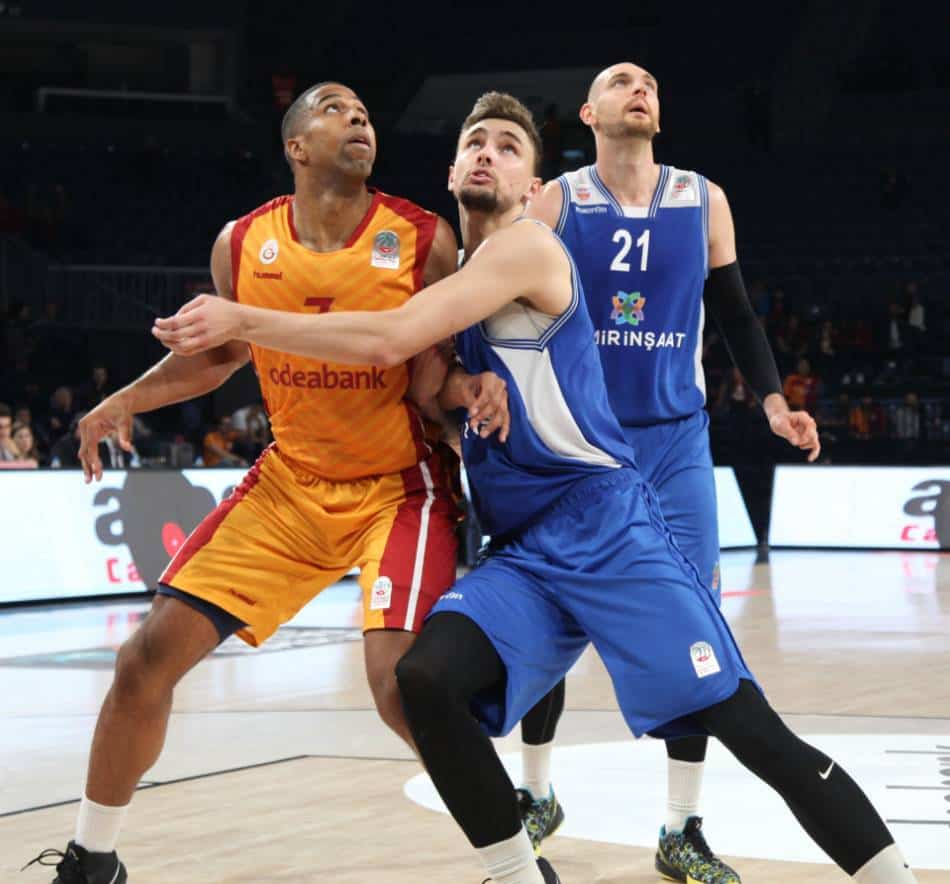
The fourth basketball position on our list is the power forward. Often referred to as the ‘four-man’, ‘big man’, or ‘PF’, the power forward is one of the taller players on the floor. In terms of height, a power forward is usually around 6’9’’ to 6’11’’.
They spend most of their time down low, but a quality power forward in today’s game should have a good long-range shot as well. Like the other positions, the more versatile player that you are, the better — especially in the NBA.
Don’t expect to be a power forward if you aren’t prepared to handle resistance and constant contact. You’re often thrust into the most crowded and dangerous spots on the floor, so expect to be underneath the basket a lot.
What Skills Does a Power Forward Need?
When I think of the power forward position, one word comes to mind — hustle. These players aren’t quite big and strong enough to be a center, but they’re not exactly small enough to be a small forward.
Because of this, they often have the athleticism of a small forward, but the responsibilities of a center. With ‘small ball’ becoming more popular in today’s game, power forwards also play a lot of center.
Either way, five skills are critical for finding success at power forward:
- Strength – power forwards have to hold their own when in the paint area, so strength is essential when battling for defensive and offensive rebounds and creating space down low. Hit the weight room, don’t be afraid to put on quality weight, and stay aggressive.
- Shot Block – when an opponent enters the paint area, it’s up to the center and power forward to not let that player get a shot on net. Doing this without fouling your opponent is the main goal here.
- Rebounding – whether on offense or defense, the power forward can’t let any loose ball fall in the hands of the opposing team. When a shot is up in the air, box out and grab the rebound. Don’t let anyone else near it until the coast is clear.
- Post Up – when a power forward receives the ball down low, they need several effective post moves to keep the defense guessing. Know how to pass from this position, know how to shoot out of it, and know-how to dribble away from it.
- Mid-Range Shot – power forwards find themselves open on the high post often, which is the perfect opportunity for easy mid-range shots. Working on these mid-range shots consistently in practice makes you more effective and dangerous from mid-range and on offense in general.
Mastering these skills is crucial to the power forward position, but don’t limit yourself there. The best power forwards in the league know how to diversify their game. Today, the long-range shot is becoming a major-plus for any power forward — though it’s not quite a necessity yet.
Still, coaches like to see a power forward that’s at least working on their perimeter defense and shot from behind the three-point line. They want to see improvement in other areas, that way you easily create mismatches when on the court.
Where Does the Power Forward Stand?
The power forward, along with the center, is largely responsible for maintaining the paint area and controlling the boards.
On offense, they do a lot of their work on the low and high post with their back to the basket. With their back to the basket, they can post-up and look to either make a move towards the basket or draw defenders in to free up a passing lane.
Power forwards also set screens on the perimeter often to give the guards and wing players more space to make a play. Once the screen is set, the power forward will either stay back for a long-range shot or roll towards the basket for a layup.
On defense, the power forward either guards the opposing power forward in man-to-man defense or underneath the basket in zone defense.
Whether the power forward is on offense or defense, their main goal is to take up bodies down low so your teammates have space to move and get open. When a shot is in the air, box out and prepare for the rebound.
Who Is the Best Power Forward in the NBA?
When talking about power forwards, there aren’t as many superstars in the league as there are at other positions. In addition to that, it’s difficult to find a true power forward these days with the amount of versatility and position changes we see on a nightly basis.
In the NBA today, there are three power forwards that stand out above the rest — Giannis Antetokounmpo, Anthony Davis, and Jayson Tatum. Although there are a lot of great power forwards behind them, these three are in a league of their own and are the major reasons their teams are always in playoff contention.
Let’s take a closer look at their careers so far:
- Giannis Antetokounmpo – 7 seasons, 528 games, 20.1 points, 8.9 rebounds. 4.3 assists, 1.2 steals and 1.3 blocks per game.
- Anthony Davis – 8 seasons, 528 games, 24.0 points, 10.4 rebounds, 2.2 assists, 1.4 steals and 2.4 blocks per game.
- Jayson Tatum – 3 seasons, 225 games, 17.3 points, 6.0 rebounds, 2.2 assists, 1.2 steals and 0.8 blocks per game.
Outside of those three, there are several veterans and younger players that have made a name for themselves. Al Horford has been doing this for a while and continues to be among the best power forwards in the league, along with Kevin Love, LaMarcus Aldridge and Blake Griffin.
On the other hand, Pascal Siakam is one of the up-and-coming power forwards in the league, along with Kristaps Porzingis and Bam Adebayo (though he’s also considered a center).
With the way power forwards are starting to gain versatility, we’ll continue to see the NBA develop some extremely talented players in the future.
The Center Position in Basketball
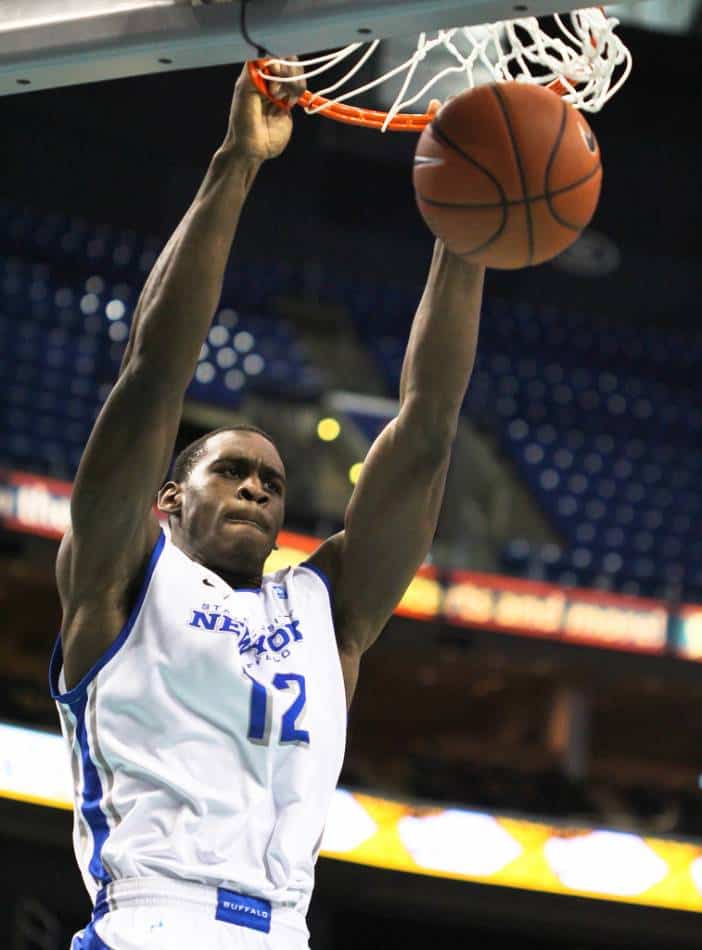
Now for the fifth and final basketball position, the center is the other big man alongside the power forward. They’re also referred to as the ‘big’ or ‘five man’ on the floor. They often line up opposite to the power forward and play near the basket, creating a powerful duo down low — especially when they have a lot of chemistry with each other.
The center is usually the tallest player on the team and truly creates havoc when moving down low. They’re tough to guard and even tougher to box out, which is why it’s almost essential to have a 7-footer on your team these days.
Much like the other positions, however, the center position is evolving and some teams take the risk of playing ‘small ball,’ despite the benefits of having a big center on the court. If you truly want to be a threat in this league, versatility is key.
What Skills Does a Center Need?
Since centers are generally the tallest player on their team, they don’t have as much athleticism or mobility when moving down the floor — especially compared to a point guard. While they spend a lot of their time near the basket, they still have a lot of responsibility and are asked to do a lot on the court.
Let’s take a look at some of the prominent skills needed to find success as a center:
- Post Moves – being under the rim and in the paint area most of the game, centers should have a well-rounded post-game that includes a barrage of moves and options.
- Rebounding – anytime the ball is up in the air after a shot, the center is the primary rebounder and must get himself in position to secure the rebound.
- Outlet Pass – an outlet pass occurs when the rebounder quickly passes the ball to a teammate to initiate the fast break. Since centers gather a lot of rebounds, this skill is essential.
- Pick & Roll – when setting a screen on offense, knowing how to properly and effectively roll towards the rim is key to creating opportunities for yourself. It’ll also help take some of the defensive pressure off the ball handler.
- Shot Blocking – in addition to posting up themselves, centers are often matched up with the opposing team’s best post-up player. Knowing how to reject anyone’s shot attempt when they get in the paint area helps your team win.
As basketball players continue to evolve, the center position looks to be getting a makeover as well. Centers are becoming better at three-point shooting, which is helping to spread out the floor, along with the power forwards.
We’ve said it often, but it’s the new requirement with the way basketball is played these days — versatility is key when playing the center position.
Who Is the Best Center in the NBA?
Now that we understand more about the center position and what they’re asked to do on the court, let’s take a look at some of the most dominant centers in the NBA right now. The three players below almost exclusively play center and won’t see much time at power forward.
Here they are:
- Nikola Jokic – 5 seasons, 381 games, 17.0 points, 9.6 rebounds, 5.5 assists, 1.1 steals and 0.7 blocks per game.
- Karl-Anthony Towns – 5 seasons, 358 games, 22.7 points, 11.8 rebounds, 2.8 assists, 0.8 steals and 1.5 blocks per game.
- Nikola Vucevic – 9 seasons, 598 games, 16.1 points, 10.2 rebounds, 2.6 assists, 0.9 steals and 0.9 blocks per game.
There’s one more player I’d like to showcase here and we mentioned him earlier — Bam Adebayo. He’s technically a center, but also plays a lot of power forward for the Miami Heat because he’s not as tall as most centers. Still, he’s just as aggressive and dominant.
He was named to his first All-Star game during the 2019-2020 season and averaged 15.9 points, 10.2 rebounds, 5.1 assists, 1.1 steals and 1.3 blocks per game.
The Sixth Man in Basketball
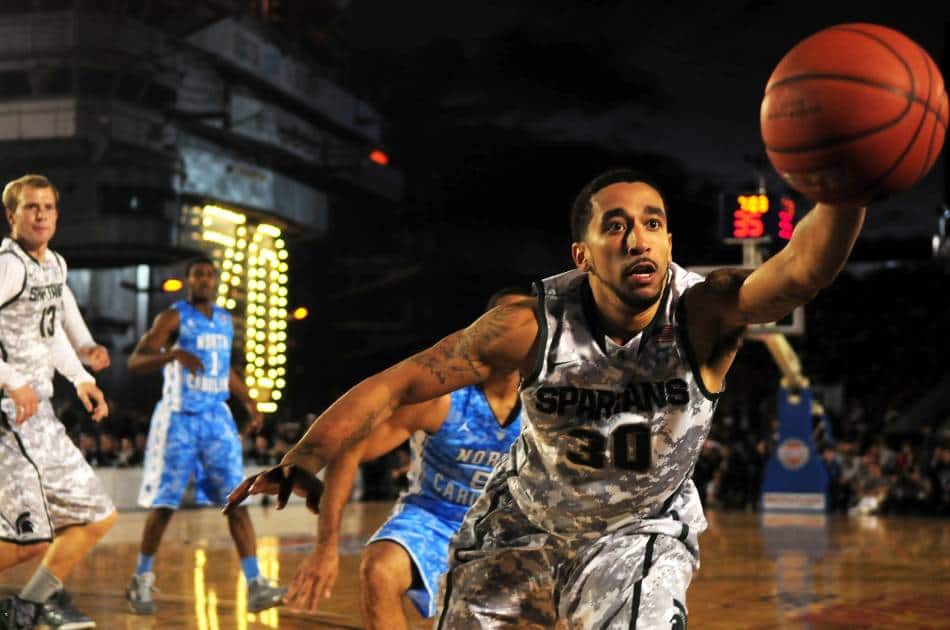
I know we said there were five basketball positions — and there are — but there’s one more player we want to talk about in the game of basketball. It’s not so much a position as it is a role, but they’re the most important non-starter on the team and are just as important as any starter — the sixth man.
The sixth man is the first player that comes off the bench and receives more playing time than any other bench player. If you don’t have a solid sixth man on your team, then you’ll struggle to find much success when the starters aren’t on the floor.
They’re the player that ‘holds the fort down’ when starters need rest. They keep the bench motivated and are often considered the ‘quarterback’ of the bench. They especially come in handy when a starter isn’t having a good night or is in foul trouble early.
What Skills Does a Sixth Man Need?
While the sixth man can be any player and any position on the team, most people expect the sixth man to carry different traits. While that’s true, several skills and traits are necessary when being labeled a sixth man.
Let’s take a look:
- Energy – the sixth man is supposed to provide energy off the bench every game. They’re pumped up, they can’t wait to get called in, and don’t need any time before reciprocating that energy to their teammates.
- Scoring – one of the things a coach wants in their sixth man is quick and consistent scoring. They need to rely on their sixth man to pick up the slack from the starters so the team doesn’t skip a beat.
- Playmaking – if you’re not scoring as the sixth man, you’re getting others involved and finding the open man. You’re always moving and making sure the defense stays on their toes at all times.
- Stamina – although they come off the bench most nights, the sixth man can be thrust into a starting role or extended minutes any night, especially if an injury occurs. Being able to play as long as needed helps your coach when in a dire situation.
- Intelligence – there’s nothing worse than a sixth man that enters the basketball game and instantly starts making mistakes. Instead, the sixth man needs to set a good example for the rest of the bench and make smart decisions when on the court. At the same time, not shying away from being aggressive.
The sixth man is a coveted role in basketball and is an extremely big honor for any player. It’s generally reserved for an up-and-coming player that isn’t quite ready for a starting role, an aging player that still has a lot of spark left in them, or your sixth-best player because you can’t start everyone on your team.
Who Is the Best Sixth Man in the NBA?
Although roster lineups change on a nightly basis, the sixth man is likely to stay the same. Constant changes to a starting lineup are enough to deal with, so coaches try to limit the number of changes to the core of their bench.
In today’s NBA, four players are regarded as the best sixth men in the league. Let’s take a closer look at each one:
- Lou Williams – 15 seasons, 1,001 games, 14.5 points, 2.3 rebounds, 3.5 assists, 0.9 steals and 0.2 blocks per game.
- Goran Dragic – 12 seasons, 817 games, 13.9 points, 3.1 rebounds, 4.8 assists, 1.0 steals and 0.2 blocks per game.
- Montrezl Harrell – 5 seasons, 318 games, 12.7 points, 4.9 rebounds, 1.3 assists, 0.6 steals and 0.9 blocks per game.
- Terrence Ross – 8 seasons, 561 games, 11.0 points, 2.8 rebounds, 1.1 assists, 0.9 steals and 0.3 blocks per game.
Lou Williams has long been regarded as the best sixth man in the NBA for several years now. He has won the award three times, tying a record set by Jamal Crawford.
For some, it might be confusing to see Lou Williams and Montrezl Harrell both on this list because they’re both on the same basketball team. It’s rare but the Los Angeles Clippers have so many good players on their team that they have two quality players coming off their bench.
What a luxury, right?
